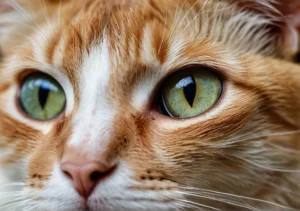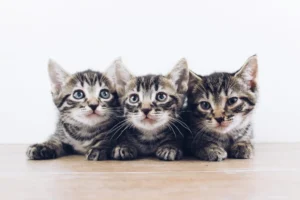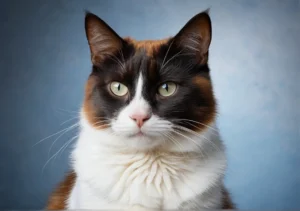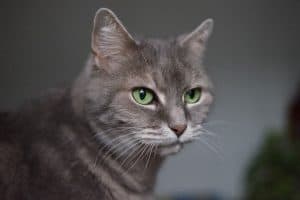Orange cats are often affectionately referred to as “red” by many. But why exactly are these feline friends called red when their fur is clearly orange? Let’s uncover the mystery behind this interesting color conundrum.
Orange Cats vs. Red Cats: The Color Misnomer Explained
History of Cat Color Naming
Let’s take a trip back in time to understand how the naming of cat colors has evolved. You might be surprised to learn that the term “red” has been associated with orange cats for centuries! Back in the day, people didn’t have as many color distinctions as we do now. Reds, oranges, and yellows were all grouped together under the umbrella of “red.” So when orange cats made their appearance, they were simply called “red cats.”
As language and color perception evolved, so did the naming of cat colors. However, the tradition of calling orange cats “red” stuck around. It’s a quirky linguistic quirk that has persisted through the ages. So next time you see an orange cat referred to as “red,” you’ll know it’s a nod to the colorful history of feline nomenclature.
Genetics of Orange Cats
Now, let’s dive into the fascinating world of genetics and uncover the secrets behind the vibrant fur of orange cats. The unique hue of orange cats is determined by their DNA. Specifically, the gene responsible for their striking color is the O gene, also known as the orange gene.
When an orange cat has two copies of the O gene, one from each parent, it will display a solid orange coat. If the cat only has one O gene, it may have a coat with a mix of orange and another color, typically white. Interestingly, the X chromosome plays a significant role in determining the color of orange cats. Female cats with two X chromosomes can have a mix of orange and non-orange patches, known as tortoiseshell or calico patterns.
Understanding the genetics behind orange cats not only sheds light on their vibrant fur but also highlights the intricate and beautiful complexities of feline genetics. Next time you see an orange cat sunning itself by the window, you’ll appreciate the science behind its stunning hue.
The Influence of Language and Culture
Did you know that the naming of orange cats as “red” is often influenced by cultural and linguistic factors? In some regions, the distinction between orange and red may not be as clear, leading to the use of the term “red” for these feline friends. For example, in Japanese culture, the color known as “orange” in English is often referred to as “red” (aka “aka”) due to historical influences. Understanding these cultural nuances can shed light on why orange cats may be called red in different parts of the world.
Famous Fictional Red Cats
From the lazy but lovable Garfield to the enigmatic Cheshire Cat, red cats have made their mark in popular culture and literature. These iconic feline characters have captured the hearts of audiences worldwide with their unique personalities and traits. Whether it’s Garfield’s insatiable love for lasagna or the Cheshire Cat’s cryptic wisdom, these red cats have become beloved symbols in the world of fiction. Other notable red cats include Heathcliff, Felix the Cat, and Puss in Boots, each adding their own distinctive flair to the realm of fictional feline companions.
- Garfield: Known for his love of food and disdain for Mondays, this orange tabby cat has entertained audiences for decades with his humor and charm.
- Cheshire Cat: From Lewis Carroll’s “Alice’s Adventures in Wonderland,” this mischievous feline with his iconic grin has perplexed and delighted readers for generations.
- Heathcliff: The street-smart orange cat from the comic strip of the same name, known for his witty banter and adventurous spirit.
- Felix the Cat: The first animated character to attain widespread popularity, Felix’s clever antics and magical bag of tricks have endeared him to audiences young and old.
- Puss in Boots: This cunning cat from the fairy tales of Charles Perrault is famous for his fancy footwear and quick thinking, making him a timeless favorite among readers of all ages.
So, whether you’re a fan of animated cats, literary classics, or modern comics, these famous red cats are sure to leave a lasting impression on cat lovers everywhere.
The Psychological Impact of Color Perception
Have you ever wondered why some people see orange cats as “red”? The perception of color can vary greatly among individuals due to psychological factors. Factors like upbringing, cultural influences, and personal experiences can all play a role in how we interpret colors. So, when someone refers to an orange cat as “red,” it may simply be their subjective perception of the color based on these psychological influences.
Mythbusting: Debunking Common Misconceptions
Let’s debunk a common misconception surrounding the naming of orange cats as “red.” One widespread belief is that orange cats were mistakenly labeled as “red” due to a translation error. However, the truth is that the classification of orange cats as “red” dates back centuries when shades of orange were often referred to as variations of the color red. This historical context sheds light on why the term “red” is used for orange cats, dispelling the myth of a simple translation error.
- Color Variations: While some may argue that orange and red are distinct colors, it’s important to note that colors exist on a spectrum. The naming of orange cats as “red” may simply be a matter of interpretation within this spectrum.
- Historical Context: Understanding the historical use of color terms can provide insight into why orange cats are referred to as “red.” In the past, the distinction between orange and red may not have been as clear, leading to the classification of orange cats under the broader category of red hues.
- Cultural Influences: Cultural norms and traditions can also impact how we name and perceive colors. In some cultures, the distinction between orange and red may not be as significant, leading to the use of the term “red” for orange cats.
Fun Facts About Orange Cats
Orange cats are often mistakenly called “red” due to the genetic origins of their coat color. The gene responsible for their orange hue is closely linked to the gene for red hair in humans, creating confusion in naming. Despite this misnomer, orange cats are a unique and beloved group of felines with their own fascinating characteristics.
Here are some fun facts about orange cats:
- Tabby Triumph: Most orange cats are tabbies, showcasing distinctive striped or swirled patterns on their fur that add to their charm.
- Rare Gem: While orange cats are fairly common, only around 20% of ginger cats are female, making them a bit rarer than their male counterparts.
- Color Variations: The shade of orange in cats can vary greatly, from pale cream to deep ginger, creating a wide spectrum of stunning hues.
- Personality Plus: Orange cats are often known for their friendly and outgoing personalities, making them loving companions for people of all ages.
- Health Heroes: Some studies suggest that orange cats may have a slightly higher pain tolerance, making them resilient and strong in times of need.
These fascinating facts highlight the special nature of orange cats and why they are a beloved part of the feline world.
Celebrating the Uniqueness of Orange Cats
Orange cats may be called “red” cats, but their vibrant personalities and striking appearance make them truly unique in the animal kingdom. Despite the color confusion, these felines deserve to be celebrated for the wonderful pets they are, regardless of the name they are given.
Embrace the individuality of orange cats with these tips:
- Stand Out Style: Orange cats turn heads with their bold and beautiful coats, standing out in a crowd and capturing attention wherever they go.
- Endearing Energy: These cats are often playful and full of energy, bringing joy and laughter to any household lucky enough to have them around.
- Loving Companions: Orange cats are known for their loyalty and affection towards their human companions, forming strong bonds that last a lifetime.
- Sunshine Smiles: The sunny disposition of orange cats can brighten even the darkest of days, spreading warmth and happiness wherever they go.
Celebrate the uniqueness of orange cats and embrace the joy they bring into your life, no matter what color you call them.
Alex, a passionate animal lover, has experience in training and understanding animal behavior. As a proud pet parent to two dogs and three cats, he founded AnimalReport.net to share insights from animal experts and expand his knowledge of the animal kingdom.




